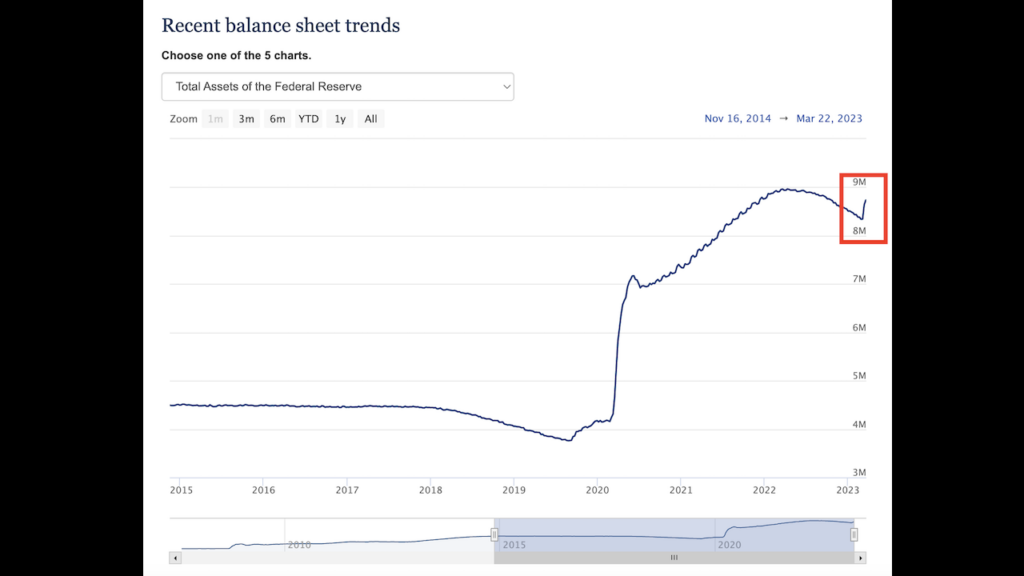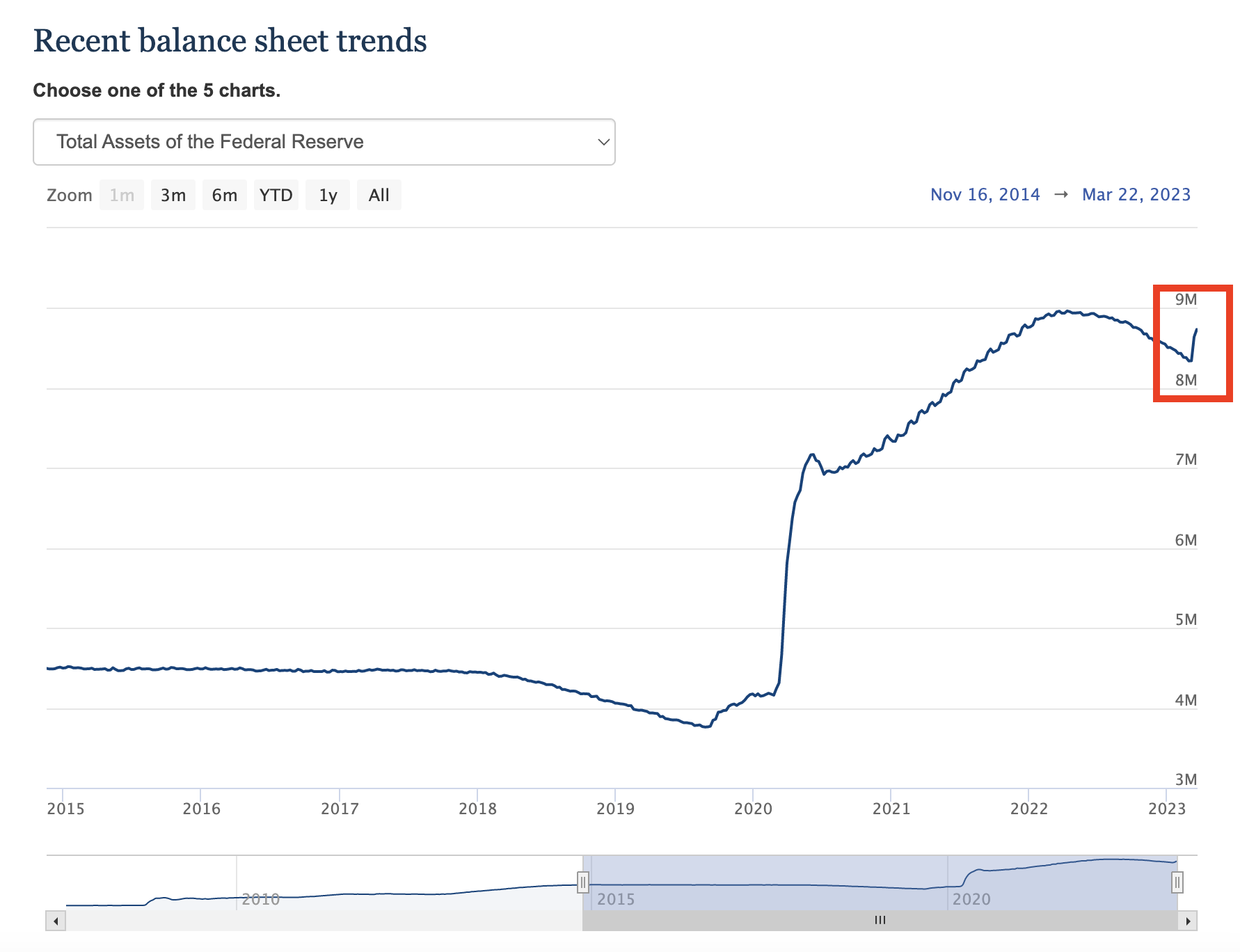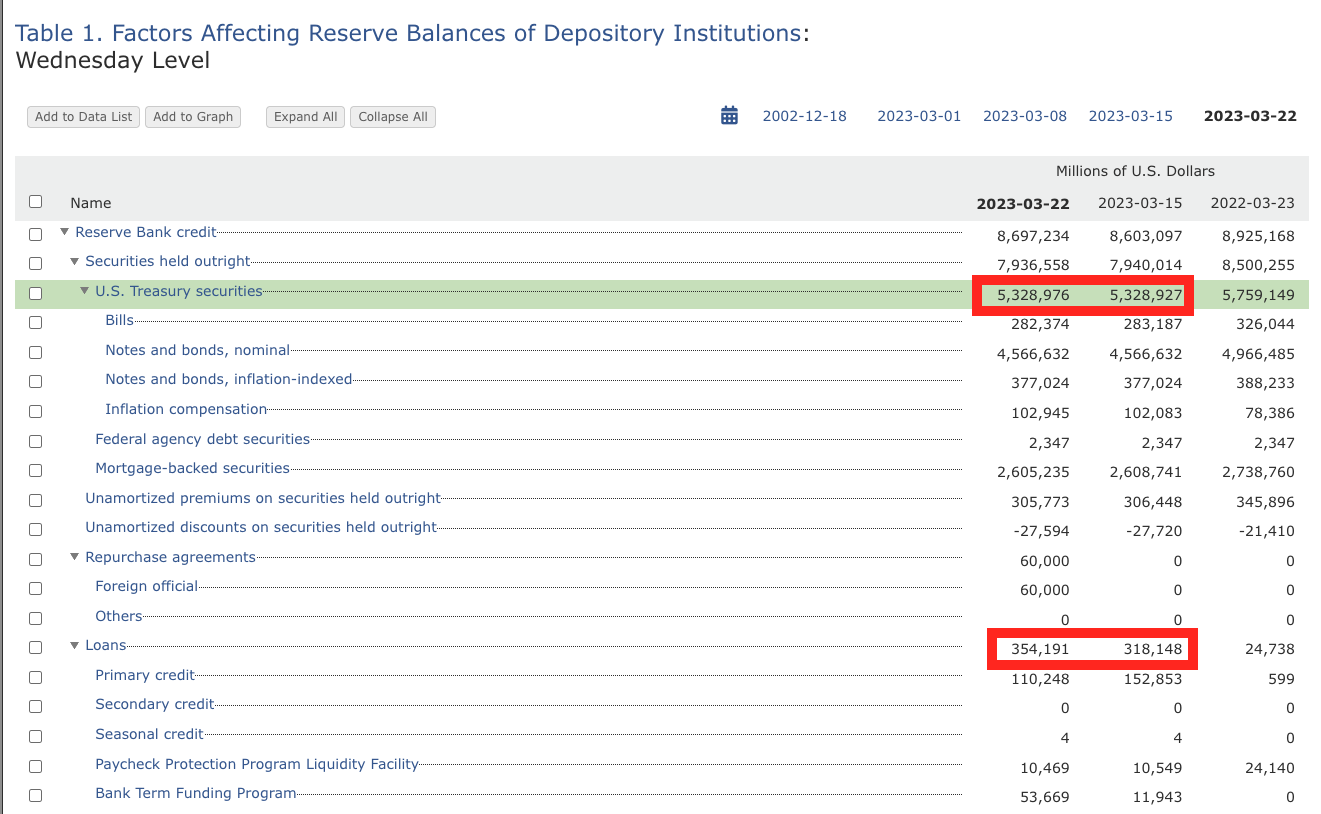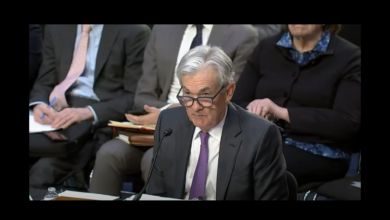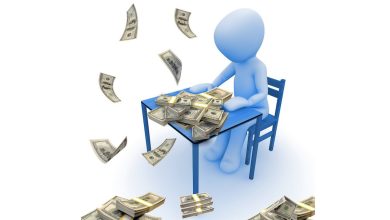Fed Adds Another $94 Billion to Its Balance Sheet in Week Two of Bailout
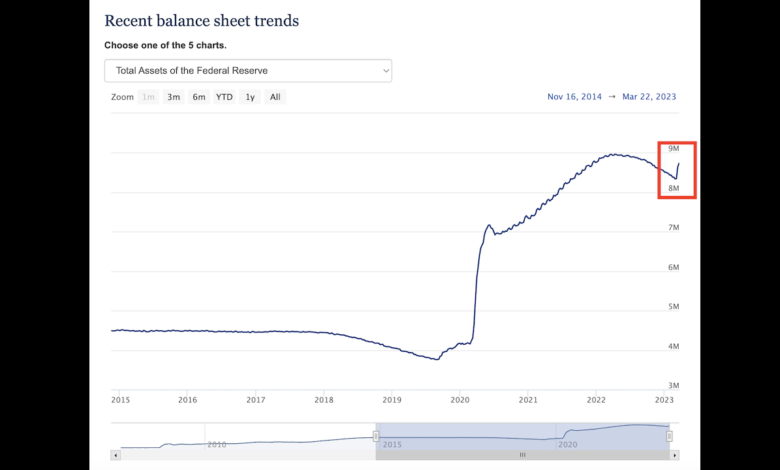
In the week before it raised interest rates another 25 basis points to fight inflation, the Federal Reserve added more than $94 billion to its balance sheet. This was on top of the nearly $300 billion it piled onto the balance sheet in the first week of its bank bailout.
The balance sheet reveals that Fed has loaned banks nearly $400 billion in money created out of thin air in just two weeks.
In other words, it’s created nearly $400 billion in inflation while pretending to fight inflation.
After the failure of Silicon Valley Bank, the Federal Reserve announced a loan program that will allow other banks to easily access capital “to help assure banks have the ability to meet the needs of all their depositors.”
The Bank Term Funding Program (BTFP) offers loans of up to one year in length to banks, savings associations, credit unions, and other eligible depository institutions pledging US Treasuries, agency debt and mortgage-backed securities, and other qualifying assets as collateral. Banks can borrow against their assets “at par” (face value).
According to a Federal Reserve statement, “the BTFP will be an additional source of liquidity against high-quality securities, eliminating an institution’s need to quickly sell those securities in times of stress.”
As you can see from the breakdown below, most of the balance sheet expansion came from new loans added to the Fed’s balance sheet.
Meanwhile, in the first week of the bailout, the number of Treasuries on the balance sheet fell slightly. Last week, it increased its Treasury holdings, but only by a small amount. The number of mortgage-backed securities fell again.
Keep in mind, the bonds pledged in collateral don’t show up on the Fed’s books unless the bank defaults. So, while the Fed can plausibly argue that they aren’t engaged in quantitative easing, the effect of this loan program is exactly the same. The central bank is creating new money out of thin air and injecting it into the financial system.
As Peter Schiff said in an interview on NTD News, this is how Americans are going to pay for these bank bailouts – the inflation tax, and when President Joe Biden claims Americans won’t pay for these bailouts, he’s lying.
They’re going to pay the cost through higher prices. And when he says that everybody’s bank account is now safe, it’s not. It’s in more danger than ever before because your bank account is going to be eroded in value because of inflation. So, even if your bank doesn’t fail, and you don’t lose your money, your money is going to lose its value.”
In my Friday Gold Wrap podcast last week, I argued that the Fed is trying to thread a needle with a rope. It’s trying to maintain the illusion of an inflation fight as it simultaneously attempts to fix the banking system its inflation fight broke.
In a sense, the Fed executed a shrewd move with its bank bailout. It created a way to mitigate the impact of interest rate hikes on bank balance sheets without having to pause its monetary tightening more broadly. In fact, the Fed raised rates last week despite the unfolding financial crisis.
Keep in mind, banks are in trouble precisely because the Fed raised interest rates so fast after holding them at zero for so long. As Peter Schiff noted, “It was the Federal Reserve that created all these distortions by its artificial suppression of interest rates, and it caused financial institutions to take incredible risks in order to get a return.”
With this loan program in place, banks can access capital based on their devalued bond holdings without selling their Treasuries and mortgage-backed securities into the market at a big loss (as SVB was forced to do). This provides some stability for both the banks and the bond markets.
This is how the Fed was able to raise interest rates and make a show of staying in the inflation fight. It can even keep shedding Treasuries and mortgage-backed securities from its balance sheet. Meanwhile, the banks can avoid the pain by accessing this crazy loan program. In effect, it can have its cake and eat it too – at least for a little while.
This looks a lot like a “kick the can down the road” scheme. I think Powell and Company are hoping this loan boondoggle will buy them time to keep tightening for a while longer in the hope that CPI will drop enough in the next couple of months to claim victory over inflation and then pivot without losing face.
The problem is that even if they manage to thread this needle, something else will break in the economy or the financial system. It’s only a matter of time. This economy was built on artificially low interest rates and easy money. Without that foundation, the house of cards will eventually collapse completely.
Call 1-888-GOLD-160 and speak with a Precious Metals Specialist today!
Buka akaun dagangan patuh syariah anda di Weltrade.
Source link

